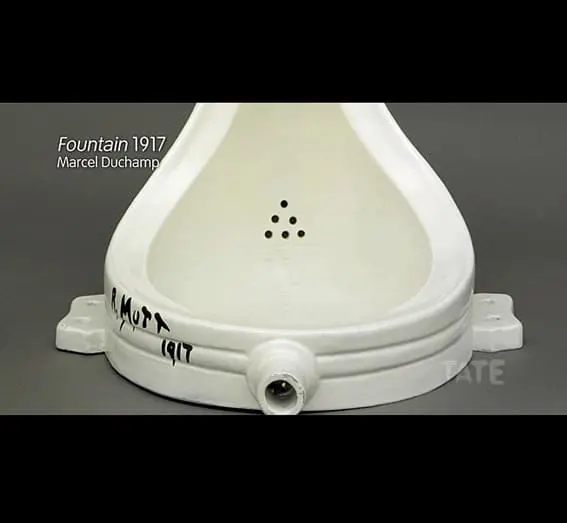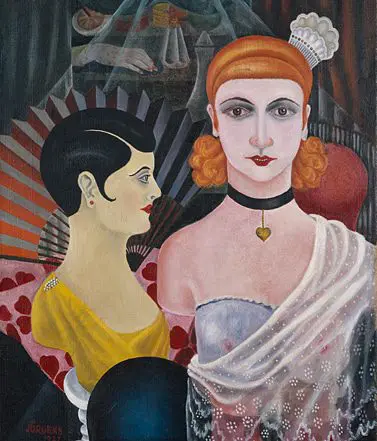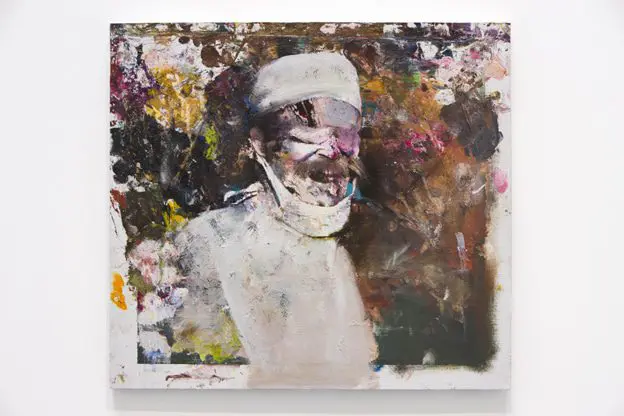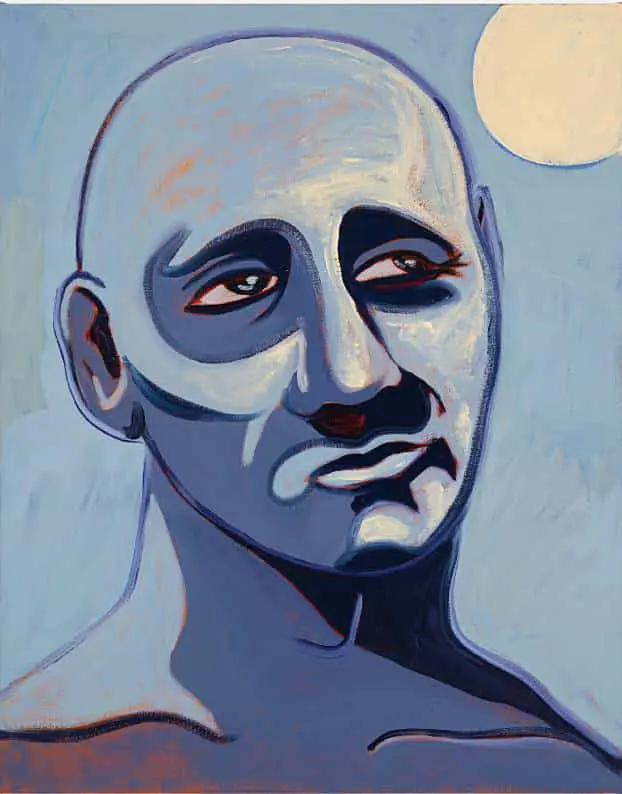
When I first saw Kemi Onabulé’s images for The Lunatics show I was immediately captivated. Something about these images made me think about what it meant to be human. It reminds us of a time before civilisation when we were more closely connected to nature.
It also reminded me of the story of Adam and Eve, an idealised memory of an earlier era where we as humans lived a simpler way of life. Later as we became increasingly ‘civilised’ we lost touch with our more instinctive relationship with nature as we tried to bend it to our will.
Kemi is fascinated by the moon. She’s fascinated by the effect the moon has on us as human animals. This can be a physical effect but also an emotional and spiritual one. Her figures have a timeless quality to them. They are at once about us as people from ancient times and also us in modern times attempting to forge a new relationship with nature. This new relationship is desperately needed as we try to find a way forward, working with nature rather than seeing it as something to exploit. It will be interesting to see how it changes us as humans in the process.
I was curious to ask Kemi some questions about her show to gain more of an insight into her work.

How did you decide on the concept of the show?
The theme of the moon as a character within my work has been there for as long as I have been making paintings and I wanted to bring it forward, take it from just being in the background to a force that is affecting the characters in the world I have made. The moon holds symbolic, religious and cultural importance for so many groups of people that it has almost forced its way into the work. I am always looking to engage myself and the work in more elemental ideas, anchoring it closer to nature and the base parts of our experience.
What did you decide to call it The Lunatics?
I was going through the various etymological routes of the word ‘moon’ or ‘Luna’ the historic connection of our mental state being linked to the moon’s phase. The word ‘Lunatic’ translates directly as ‘moonsick’. The moon has such an enormous impact on the planet, affecting tides and the atmosphere, it is only natural that we too would be caught up in its pull.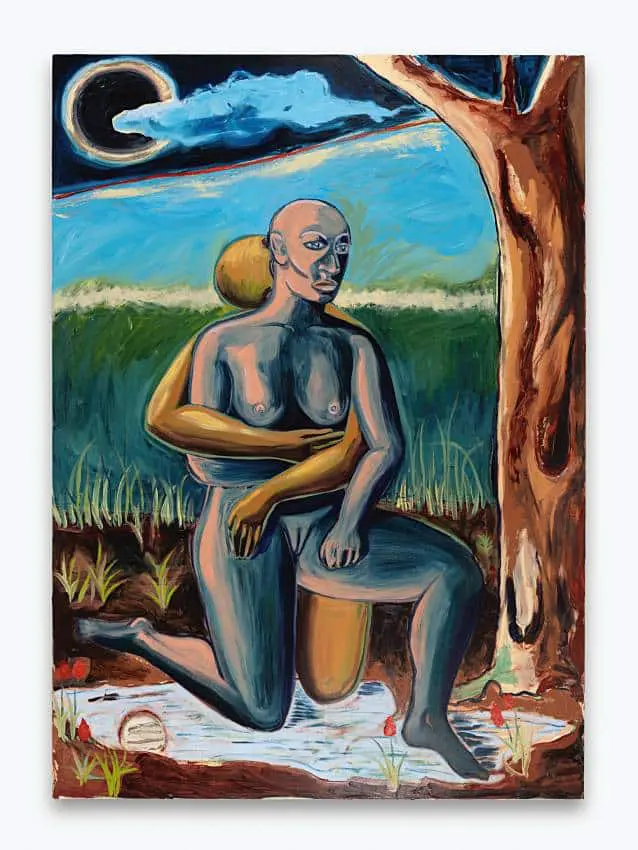
When did your interest in the moon and its power first start?
I have always been preoccupied by the moon and as a child, I would point to it, always acknowledging its presence. Now I think about it it is kind of a strange thing for a child to do ! As a pictorial motif, it is a wonderful device. It allows you to paint the darkness with light. An atmospheric light that the sun does not possess.
How important was it for the figures to seem timeless and that the figures were bald and nude?
For me it goes back to the idea of universality. Many cultures delineate class, gender and rank through the clothes and style of hair worn. For me I want to make the paintings as open as possible. by side stepping these details I can offer a more universal view of humanity. I have decided to make portraits again, but still using these bald nude characters. They could be from anywhere at any time.
I think there is a huge focus in the visual arts at the moment in grounding everything in the individual experience and the specific identity of a person, but I often think this can close off the work to wider interpretation. I enjoy creating my own language of bodies and landscapes.
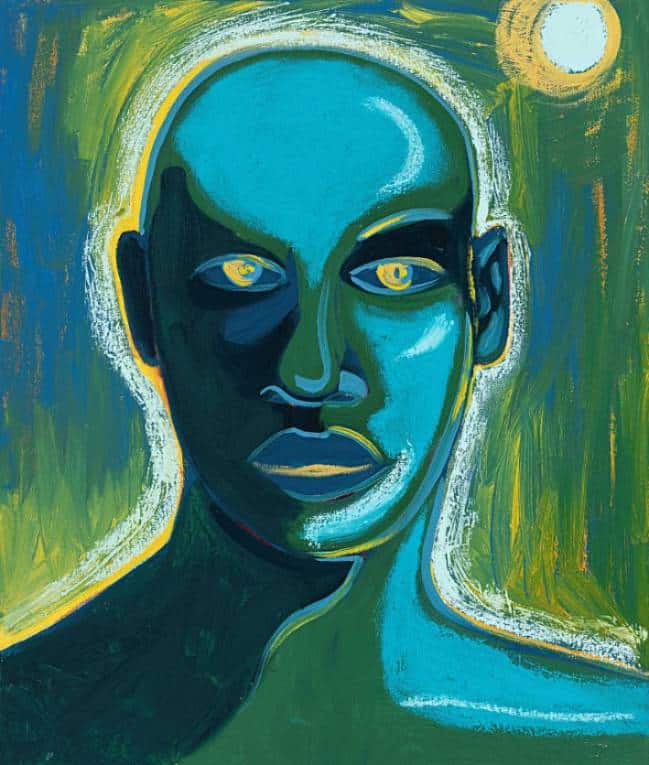
You use some vivid colour clashes that create different moods and atmosphere. How important was colour to the overall concept of the show and the paintings themselves?
Colour comes quite naturally and it informs the work mainly as a way of enhancing the mood of the paintings. I have been enjoying a more monochromatic way of using colour, especially in these portraits. It makes something as still as a portrait come alive for the viewer.
Are the characters influenced by people you know or are they more universal and representative of us as humans?
I take images of faces that capture my imagination, screenshot from videos, classical paintings, sculptures. Anything really. It’s all about the eyes for me. If the eyes emote a particular feeling, usually longing, then I feel compelled to pin it down in a painting.
When we existed in so-called primitive groups we were more connected to nature. Is this something you wanted to get across in your exhibition?
Totally. The idea of living amongst nature, though it has its immense challenges, I think suits our minds, bodies and souls. We are so new to the way we live now and it causes so many problems within our own societies and withing the ecosystem itself, that we need maybe to rethink our supposed progress.
The Lunatics is showing at Guts Gallery until 3rd March



